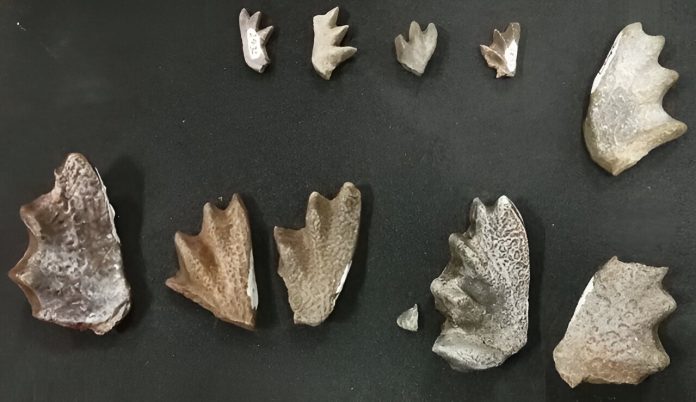
A new species of lungfish, discovered in Zimbabwe, could change how we understand the evolution of these unique animals.
The fossil, named Ferganoceratodus edwardsi, honors Steve Edwards, a safari guide and amateur fossil hunter who played a crucial role in its discovery.
Edwards has also found other significant fossils in southern Africa, including a phytosaur and a new dinosaur.
Lungfish are fascinating freshwater fish closely related to all animals with four limbs, such as amphibians, reptiles, birds, and mammals.
They have lungs that allow them to breathe air, a feature that sets them apart from most other fish.
Lungfish have survived for about 420 million years, earning them the title of “living fossils” due to their long evolutionary history.
Professor Paul Barrett from the Natural History Museum, a co-author of the study, praises Edwards for his contributions to paleontology.
“Steve is an important force for paleontology, having discovered several Late Triassic sites in southern Africa,” he says.
“By sharing his discoveries, Steve is helping us to better understand this important moment in evolution.”
The research on Ferganoceratodus edwardsi was published in the Journal of Vertebrate Paleontology.
The team, including researchers from the Natural History Museum, hopes to return to the region to uncover more fossils and new species.
Lungfish have a curious fossil record. Most well-preserved specimens come from the beginning of their evolution, around 420 million years ago. However, during the Mesozoic Era (252 to 66 million years ago), only teeth and occasional skulls are found. This is surprising because lungfish were still common, meaning there should have been plenty of opportunities for fossilization.
Finding more Late Triassic lungfish fossils is essential to fill gaps in their history. The site where Ferganoceratodus edwardsi was found is nicknamed “The Dentist” because of the numerous fossilized teeth discovered there. These teeth, specifically tooth plates used by lungfish to crush their food, are heavily mineralized and more likely to fossilize than their skeletons.
By examining the size and shape of these tooth plates, scientists can identify different species. The teeth from “The Dentist” site resembled a Madagascan species but had enough differences to name a new species, Ferganoceratodus edwardsi. Comparisons suggest that many lungfish species are closely related and might belong to the same group, or genus.
After first appearing in the Early Triassic, Ferganoceratodus species spread throughout Africa and South America. Their fossil record becomes sparser in the later Mesozoic, with the last fossils found in the Late Cretaceous.
To uncover more about these lungfish, scientists plan to continue excavations at “The Dentist” and other nearby fossil-rich sites.
“We hope to find more lungfish remains and other fossils, like the phytosaur and dinosaurs we’ve previously described,” Barrett says.
“More fossils will help us compare this area of Zimbabwe to similar sites in southern Africa and understand what was happening in the Late Triassic.”



